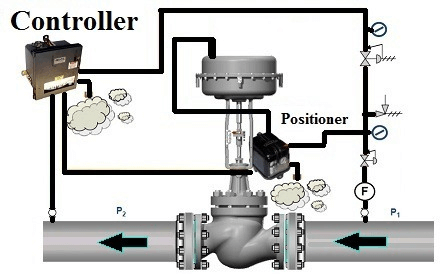Optimizing System Control with High-Performance Control Valves
Optimizing System Control with High-Performance Control Valves
Blog Article
Achieve Seamless Integration and Control With Top Quality Structure Automation Controls
In the realm of modern structure monitoring, the value of high quality building automation controls can not be overstated. Welcoming quality building automation controls is not just an issue of ease but a critical critical for companies aiming to maximize their facilities' efficiency and sustainability.

Evolution of Building Automation Controls
Throughout the past few decades, the development of developing automation controls has actually considerably changed the method structures are handled and operated. Building automation systems mostly focused on standard functions such as controlling home heating, air, and air flow conditioning (COOLING AND HEATING) systems. Nonetheless, as innovation progressed, these controls have become more innovative, enabling for a wider range of structure systems to be integrated and taken care of centrally.
The evolution of building automation controls has actually seen a shift in the direction of even more intelligent systems that can adapt to transforming problems in real-time. This adaptability is critical for maximizing power performance and guaranteeing owner convenience. Additionally, modern structure automation controls now provide functions such as predictive maintenance, remote tracking, and data analytics, enabling center managers to make data-driven decisions to boost building efficiency.

Advantages of Top Quality Combination
The development in building automation regulates in the direction of even more smart systems has actually underscored the significant benefits of quality combination in enhancing structure operations and improving total performance. This centralized control also provides much better presence and insights right into building performance, allowing proactive upkeep and optimization methods. Generally, the advantages of quality integration in building automation controls are obvious, offering raised performance, comfort, and operational performance.
Boosted User Experience and Accessibility
Enhancing customer communication with structure automation controls with intuitive style and boosted access boosts the total experience for occupants and center managers alike. By concentrating on user experience, constructing automation systems can come to be a lot more reliable and user-friendly. User-friendly interfaces, clear navigating, and customizable setups encourage customers to engage with the controls conveniently and effectively.
Access functions play a crucial role in making certain that all individuals, consisting of those with disabilities, can utilize the building automation manages with simplicity. Including functions such as voice commands, responsive switches, and color-contrasted screens can improve availability and make the controls much more comprehensive.
Moreover, improved individual experience leads to higher individual fulfillment, raised performance, and much better decision-making. Passengers can change ecological setups according to their preferences, while facility supervisors can successfully manage and check structure systems - control valves. Generally, focusing on customer experience and accessibility in building automation controls contributes to a more seamless and effective structure setting for all stakeholders included
Sustainable Practices Via Automation

Moreover, automation can promote the assimilation of renewable resource resources such as solar panels or wind turbines into building operations. By automatically changing energy use based upon the schedule of eco-friendly energy, structures can better minimize their reliance on non-renewable resources. This smooth assimilation of sustainable techniques not just profits the atmosphere but likewise boosts the general functional efficiency and cost-effectiveness of the building. Via automation, structures can line up with contemporary sustainability objectives and add to a greener future.
Future Trends in Building Control Solution
One noticeable fad shaping the future of building control systems is the increased integration of Artificial Intelligence (AI) and machine understanding. Additionally, the Internet of Points (IoT) is changing structure control systems by linking gadgets and sensors to enhance procedures and boost efficiency.
One more vital trend is the emphasis on cybersecurity actions to protect against potential hazards to constructing automation systems. As structures become more interconnected, ensuring robust cybersecurity methods will certainly be important to secure delicate data and protect against unapproved access.
Furthermore, the change towards cloud-based systems is getting momentum, permitting centralized control and remote access to structure systems. This assists in simpler tracking, maintenance, and updates, improving the overall performance and versatility of building control systems. As technology remains to development, these patterns are anticipated to form the future landscape of building automation controls, driving development and sustainability in the built environment.
Conclusion
Future fads in building control systems are likely to concentrate on further enhancing automation capacities for boosted power effectiveness and general performance. It is essential for structure proprietors and drivers to prioritize the fostering of top quality building automation controls to maximize building operations and achieve long-term sustainability objectives.
In the world about his of modern-day building management, the relevance of quality building automation controls can not visit this site be overemphasized. In general, the development of structure automation regulates continues to drive advancement in the structure management industry, offering brand-new opportunities for developing smarter and more lasting buildings.
The development in structure automation regulates towards more intelligent systems has actually underscored the significant benefits of high quality integration in enhancing building operations and boosting general performance. Overall, prioritizing individual experience and availability in structure automation regulates contributes to a much more seamless and productive structure atmosphere for all stakeholders involved.
It is vital for structure owners and drivers to prioritize the adoption of high quality structure automation controls to optimize building operations and accomplish long-term sustainability objectives. - control valves
Report this page